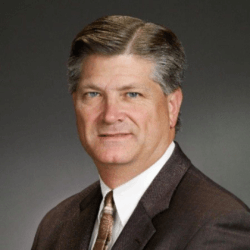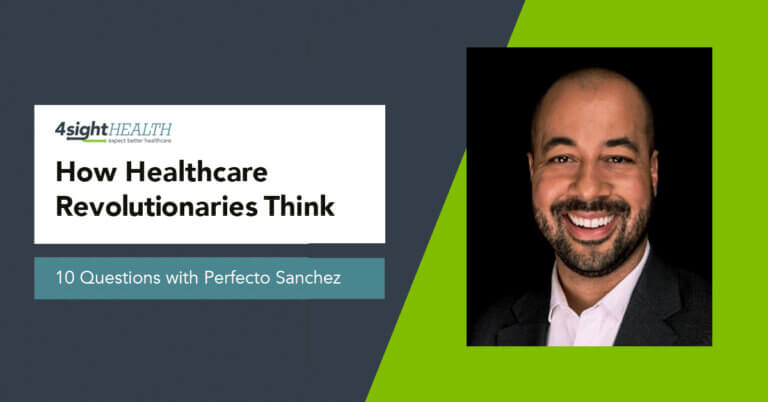March 9, 2021

Pandemic Problem Solving: COVID Couldn’t Defeat Virtua’s Supply Chain. It Made It Stronger
An Interview with Bill Christie, AVP Support Services
The pandemic tested the supply chain at Virtua Health like no prior stressor. Communication, creativity and teamwork combined to get the system’s supply chain operations through to the other side even more resilient than it was before.

During the early months of the pandemic, the epicenter of the COVID-19 outbreak in the U.S. was the New York Tri-State Area, which includes parts of New York, New Jersey and Connecticut. Virtua Health, the largest health system in Southern New Jersey, serves that market and was on the frontlines of the first COVID surge.
Virtua, based in Marlton, N.J., operates over 200 different care sites under its corporate umbrella, including five hospitals, 24 joint ventured ambulatory surgery centers, 10 inpatient and outpatient rehab facilities, eight urgent-care clinics, four health and wellness centers, two post-acute care facilities, a freestanding cancer center and more than 160 employed physician practices.
Bill Christie is Virtua’s assistant vice president for support services and runs the system’s supply chain operations. He oversees 100 FTEs and an annual supply chain spend of more than $700 million, which includes $100 million in capital assets. Christie had a front-row seat during COVID’s first surge.
4sightHealth, on behalf of MedSpeed, Virtua’s logistics partner, spoke with Christie about how the COVID-19 outbreak affected the system’s supply chain, how he and his team overcame those challenges, and lessons learned from that experience that will make Virtua’s supply chain even more resilient in the future.
![]() How are Virtua’s supply chain operations set up? How do medical supplies and equipment go from manufacturers and distributors to your patient care sites?
How are Virtua’s supply chain operations set up? How do medical supplies and equipment go from manufacturers and distributors to your patient care sites?

Christie: We’re essentially a hub-and-spoke operation. We have a centralized distribution center that receives most of the products we use directly from our vendors. The distribution center receives orders from our clinical and operations departments, picks products and delivers them to each site. We accept and deliver products seven days a week. Once the products get to our hospital sites, our onsite Support Services staff delivers the products to the clinical departments and manages par levels so the clinical staff can spend more time with our patients and less time managing supplies.
![]() It sounds like a finely tuned hub-and-spoke setup. When the pandemic hit, what happened?
It sounds like a finely tuned hub-and-spoke setup. When the pandemic hit, what happened?
Christie: It was daunting at first because no one knew what was happening and how long it was going to last. The good news is none of the spokes fell off the hub. But we needed to add a few more spokes to the hub. We needed to deliver to more sites, like physician offices and joint venture ambulatory surgery centers. And we needed to source some products in bulk quantities to ensure we would have what we needed.
![]() What were some of the high-demand products and how did you source them?
What were some of the high-demand products and how did you source them?
Christie: First, let me say that our organization, the health system management, was very understanding in that we had to do things a little differently overall to get what we needed. We needed bulk quantities of gowns, gloves and masks to protect our frontline doctors and nurses and other caregivers, and we knew that would continue for a long time. Then we all learned a new term: “non-traditional vendor.” We had to find these vendors to get the high-quality supplies we needed. We moved ahead with some rather large purchases outside of our primary vendors because our primary vendors couldn’t handle our increased demand.
![]() How did you control demand and prevent hoarding of personal protective equipment, waste of PPE or PPE walking away from your sites?
How did you control demand and prevent hoarding of personal protective equipment, waste of PPE or PPE walking away from your sites?
Christie: We appointed what we called a clinical gatekeeper at each site. It wasn’t someone from the supply chain team. It was someone who worked at that site, typically a nurse director or manager or another department director, who worked with us. It was someone at the site who had the authority, the knowledge and the understanding of what we were trying to do. The gatekeepers would tell us what PPE their sites really needed. And they managed their onsite inventory to avoid waste or misuse of the PPE.
![]() Did working with clinical gatekeepers at your sites replace online ordering?
Did working with clinical gatekeepers at your sites replace online ordering?
Christie: Yes, temporarily, but only for high demand PPE items. We needed to have tighter control on who was ordering what. There wasn’t an unending supply of products. We couldn’t have our sites using our online ordering system to order whatever they wanted and however much they wanted because it just wasn’t available. We needed to be very efficient with our processes. That’s why we needed gatekeepers. We had to limit the number of touches and transactions to make sure that everyone had what they needed.
![]() How did you get PPE to all the additional sites, or spokes, during the peak of the pandemic?
How did you get PPE to all the additional sites, or spokes, during the peak of the pandemic?
Christie: We used MedSpeed to help us pick and stage PPE going to all the physician offices that were having trouble getting enough PPE through their traditional suppliers. We asked those sites to estimate how much they needed for the next month, and we used MedSpeed to deliver what they needed outside of our usual delivery system and schedule.
![]() Was there something magical about a one-month supply versus just-in-time inventory or a two- or three-month supply?
Was there something magical about a one-month supply versus just-in-time inventory or a two- or three-month supply?
Christie: During non-COVID times, there’s a predictability to everything. You know how much you need over a specific time frame based on historical utilization trends. During COVID, at least at first, nothing was predictable. There’s no magic in a one-month supply other than it was enough to cover any swings in utilization at one site and have enough to give to all the other sites. That also insulated us from sites requesting excessive quantities and from possible hoarding of supplies if sites worried they wouldn’t be able to get more at a later time.
![]() What about other supplies and equipment like ventilators and air scrubbers? How did COVID affect supply and demand and how did you cope?
What about other supplies and equipment like ventilators and air scrubbers? How did COVID affect supply and demand and how did you cope?
Christie: At first, we needed more ventilators than we had. When we were running low, we ordered the component parts and assembled them in house. MedSpeed stored the ventilators for us, and we directed them to reposition the ventilators from site to site as needed based on the COVID patient load at each site. We also used Medspeed to move our portable HEPA units (air scrubbers) around from site to site based on need. Needs were changing day by day, hour by hour and minute by minute. We needed complete flexibility in our delivery capabilities.
![]() You mentioned storage of ventilators. How did COVID change how you store products, particularly if everyone needs a 30-day supply of each item?
You mentioned storage of ventilators. How did COVID change how you store products, particularly if everyone needs a 30-day supply of each item?
Christie: We’re not just a distribution operation anymore. Today we’re a distribution and storage operation. Our distribution center is 32,000 square feet, and we need almost double that now because of COVID. Instead of buying, storing and distributing two-weeks’ worth of products, we’re now buying, storing and distributing 90-days’ worth of product in some cases.
![]() Where did you find another 32,000 square feet?
Where did you find another 32,000 square feet?
Christie: Well, we needed flexibility and needed to have the supplies close by, so we started with two sea containers. They’re those huge shipping containers that you see on the decks of big freight ships. Now we’re up to 18 sea containers. Having the containers close by is very helpful as we constantly need to move products to and from the distribution center as we prepare for each day’s deliveries.
![]() You said earlier one concern was PPE disappearing from a site. How do you secure and Q protect those big sea containers?
You said earlier one concern was PPE disappearing from a site. How do you secure and Q protect those big sea containers?
Christie: At first, we didn’t think about that. Who’s going to steal gowns, gloves and masks, right? Then we quickly realized how valuable those items were, especially in a pandemic. We talked to our security staff and requested onsite security to watch over this important inventory. We put that in place early on and it’s still in place.
![]() You never thought you’d have sea containers. You never thought you’d have security guarding those sea containers. What else happened that you didn’t expect?
You never thought you’d have sea containers. You never thought you’d have security guarding those sea containers. What else happened that you didn’t expect?
Christie: I never thought we’d be negotiating with non-traditional vendors to buy medical supplies and equipment. If you remember the early days of the pandemic, hospitals, health systems and even states competed to buy PPE. Our Supply Chain team would meet every morning to discuss needs, potential sources for PPE and what we needed to do to that day to close out bulk buy deals.
We had all the right people at the table from Purchasing, Clinical Resource Management, Distribution Center operations and of significant importance… Corporate Finance. This enabled us to act quickly on purchase opportunities, even as we needed to perform our due diligence on the products to make sure they were safe and approved. Then in some cases, we had to wire transfer funds in a matter of hours to secure the needed PPE or we would lose that opportunity. Our Sr. VP of Finance (Gerry Lowe) was a great partner in this team effort. We also had help from our recently retired Sr. VP of Supply Chain (Jim Rivard) who came out of retirement to help us. Senior management also trusted and supported us because they knew that we had to do whatever was necessary to protect our staff and care for our patients.
What our Supply Chain team did was against our nature since we are conditioned to analyze data, compare products and negotiate for best pricing for the best products. We didn’t have time or leverage to negotiate much, so we just focused on the goal of securing high-quality PPE supplies and moved as fast as we could.
![]() How much stronger do you think your supply chain operations are now because of your experience with the pandemic?
How much stronger do you think your supply chain operations are now because of your experience with the pandemic?

Christie: We feel from this experience we can do anything. We also learned we can bring more value to the organization and be a key strategic asset. We’re serving more areas of the organization, and we’re serving each area even better than before. I can’t say enough about how our team responded, and that includes our supply chain partners like MedSpeed.
To learn more about Virtua, please visit the system’s website.
Thanks to the folks at MedSpeed for introducing us to Bill Christie at Virtua Health. We know the pandemic stretched and sometimes broke the supply chain in 2020, and we can all learn from organizations that managed the challenges well.
Click to learn more about MedSpeed’s logistics and medical courier services for health systems.
Bill Christie, Assistant Vice President Support Services, Virtua Health
Bill Christie, Assistant Vice President Support Services, is responsible for all strategic and operational aspects of the Supply Chain at Virtua Health, a multi-hospital system in southern New Jersey. Virtua’s Supply Chain includes Purchasing, Capital Contracting, Value Analysis, Mail Services, Copy Center and all aspects of supply management. Virtua utilizes a self-distribution model with a supply distribution center at the core of the operations. This “hub and spoke” model enables Virtua to efficiently serve all of its inpatient, outpatient and physician practices from one location. Bill also focuses on the development of key strategic relationships with physicians and vendors. Bill also has over 20 years of experience in hospital finance operations, is a graduate of Villanova University with a BA in Accounting, and is a CPA.





